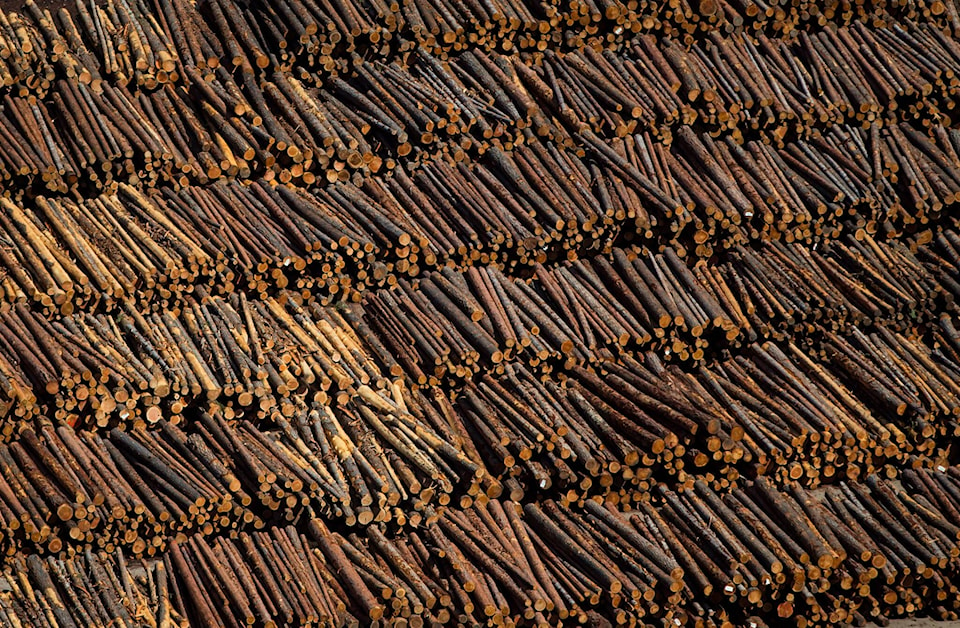Northern B.C. underscored its importance to the rest of the province during a provincial study session exploring challenges in the resource sector.
But the event also revealed frustrations and disagreements about the region's best path forward.
The session held during Monday's opening of the Union of British Columbia Municipalities conference comes on the eve of a provincial election campaign likely to be decided in the suburban ridings of Metro Vancouver.
It comes on the heels of the two latest mill closures in northern B.C. including one in Vanderhoof. One its councillors �㽶��Ƶֱ��� Brian Frenkel, who had previously served as UBCM president �㽶��Ƶֱ��� underscored what those closures mean to northern B.C. �㽶��Ƶֱ��� a resource-dependent region that represents about two-thirds of the provincial land mass, but it is only home to 350,000 people.
Given northern B.C.'s susceptibility to economic swings, Frenkel called on government to do more than consult and finally fulfill promises to improve regional infrastructure.
"When you lose a sawmill or gain a mine, those are big swings," he said.
Part of his argument rested on a presentation from Ken Peacock, chief economist and senior vice president at the Business Council of British Columbia. Peacock said 45 per cent of provincial exports come from resources drawn and dug out of the provincial land-base with forestry accounting for 16 per cent.
"So the highways," Frenkel said. "We still have horrible cell coverage in northern British Columbia. Internet is bad. Rail systems are poor."
But also highlighted the region's potential, saying it can also absorb immigrants because it has jobs. He called on government to make sure that larger projects like Artemis Gold come with community benefit agreements.
"We need to start thinking about how...the northern two-thirds of the province can solve housing."
Coun. Scott Elliott of Quesnel agreed and called on northern communities to work more closely together.
"UBCM is fantastic, but we need a voice that comes to together to really meet all of these challenges to the north and let the rest of the population know how important is," he said.
But the study session also revealed various fault lines. Prince George Mayor Simon Yu, who described his community as the "epicentre" of the economic developments within the region, said the time for action is now.
"We need to get there fast, people are moving out," he said.
The provincial government had previously touted Prince George as a future hydrogen hub in light of plans by Fortescue Future Industries to build a $2 billion green hydrogen and ammonia plant in Prince George. But those plans have become more uncertain after Fortescue said it would be focusing its hydrogen efforts elsewhere, citing financial viability. Experts had also questioned whether province would have been able to supply the necessary power for a project of that size.
Yu also pointed to the uncertainty around the acquisition of tenures by First Nations. Tiffany Butler-Hernandez, policy program manager with the B.C. First Nations Forestry Council said her organization is working with industry on that issue.
"It's kind of the elephant in the room at the moment," she said. "It seems like everywhere, but we are working on developing some sort of solution and trying to work collaboratively together."
Another point of discussion has been the role of community forests representing about four per cent of the annual harvest. Garry Jackman, Electoral Area A Director for the Central Kootenay Regional District, said he would like to see more community forests pointing to regional initiatives. But he also questioned their economic return.
Jennifer Gunter, executive director of the B.C. Community Forest Association, acknowledged that community forests fetch lower stumpage fees.
"We also know they contribute dividends to their communities in a variety of different forms," Gunter said. "They are better managed."
The discussion comes just days after the Conservative Party of B.C. released its proposals for the ailing forestry sector.
Conservatives aim to protect nearly two-thirds of provincial forests from industrial-scale forestry, while managing the remaining 22 million hectares to achieve what the party calls "supply chain stability." The party also wants to replace the historic system of stumpage with a value-added end product tax that changes with market conditions.
The NDP quickly responded by warning that this would deepen existing trade disputes with the United States.
Looming behind these disputes is the question of who would manage provincial forests, with New Democrats broadly wanting to grant First Nations and community groups a greater say.
Ultimately, Gunter argued that the current job losses in the forestry sector are not a new phenomenon.
"This is a transition that was anticipated. It was expected and of course, that doesn't make it any easier. In fact, between 1998 and 2021, forest sector employment was cut in half," she said in pointing to technological changes.
Other, more recent ecological changes have since required a further shift in focus, she added.
"So the future forest sector is going to be different," she said. "My hope is that it will be more diverse and hopefully...we will be adding more value here in British Columbia to our forest products."





